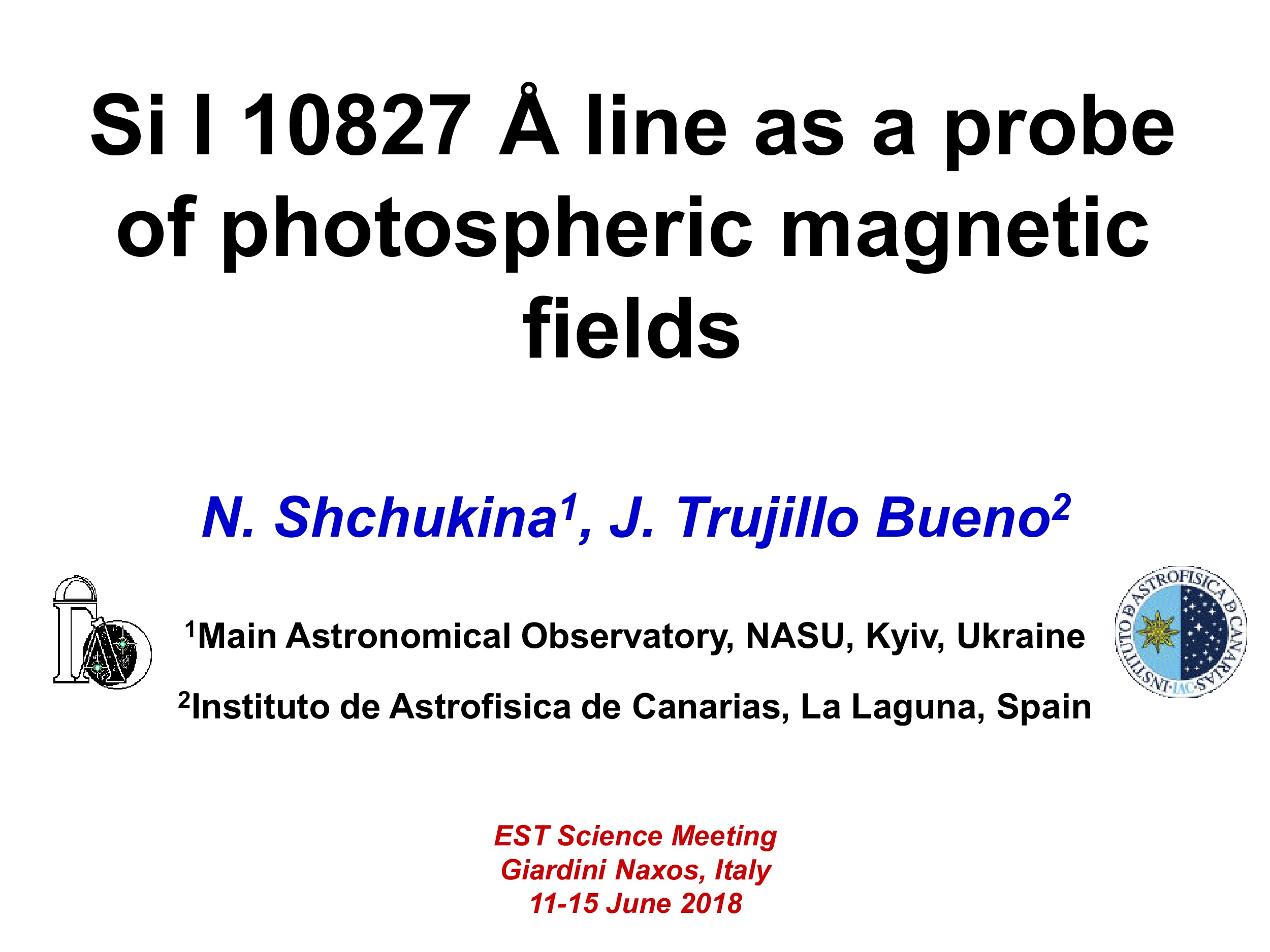Date of upload:
22.06.2018
Co-author:
Javier Trujillo Bueno
Abstract:
Scientific interest for the spectral region around 1083 nm is growing over the last years following advances in theory as well as in IR instrumentation. Such facilities require further development of diagnostic tools.The aim of our study is to analyze the validity of the weak field approximation
for the photospheric Si I 1082.7 nm line. We solve the NLTE formation problem of this line by means of multilevel radiative transfer calculations in a 3D snapshot model taken from the magneto-convection simulations with small-scale dynamo action. The spectral images of the snapshot are degraded because of the seeing and light diffraction by the telescope aperture. We apply the weak field approximation both to the original and smeared Stokes I, Q, U, V profiles supposing that they represent ``real Sun'' observations. We compare the longitudinal and transverse components of the magnetic field that one would expect from observations of the Si I 1082.7 nm line under perfect spatial resolution and under different seeing conditions of the observations done with the VTT, GREGOR and EST (DKIST) telescopes. We show that crucial condition for observation of polarization in the quiet photosphere using the Si i 1082.7 nm line is the best possible spatial resolution, clearly better than 0.5 arc sec. We find that with the spatial resolution close to the diffraction limit of the EST telescope the surface maps of the magnetic field inferred from this line using the weak field approximation are close to the maps of the real field derived on a surface with the single optical depth. The correlation between them is rather high, except that the inferred
longitudinal component of the magnetic field strength turn out to be lower than the vertical component of the ``real Sun''. At the same time, the transverse component is rather close to the horizontal one.

